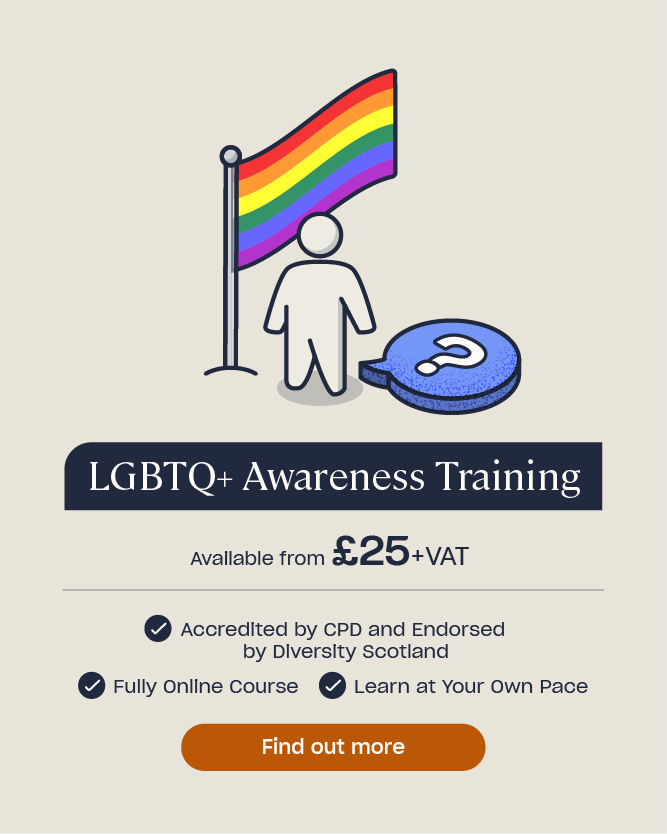Gender Dysphoria in Children: Guidance for Parents and Teachers
Gender dysphoria is a traumatic condition related to the way a person perceives their gender identity. For parents, carers and teachers, offering support to a child with gender dysphoria can be difficult and highly-sensitive, but it’s an essential part of helping the child to manage the way they feel about themselves and how they fit into society. In this article, we’ll look at what gender dysphoria is and the signs of gender dysphoria to look out for amongst children and young people, plus provide information on how to support a child who may be gender questioning or experiencing gender dysphoria in the classroom.
What is Gender Dysphoria?
Gender dysphoria is when someone experiences distress because their gender identity differs from the biological sex they were assigned at birth. Gender dysphoria is a medical term recognised by the NHS. It is not a mental health condition, though it can lead to mental health problems due to the stress and anxiety it causes.
A person’s gender identity is not necessarily the same as their sex. The term ‘sex’ refers to whether you were born as a boy or girl – your sex assigned at birth. Gender identity, on the other hand, refers to how you perceive yourself, whether as male, female, non-binary or somewhere in the middle. Your gender identity may match up with your biological sex – e.g. you were born a girl and identify as female – but for many people, the two don’t align. In these instances, a person may be questioning their gender identity.
Gender questioning is the term used to describe when a child or young person is asking questions about their gender identity, whether internally or out loud. They may be curious about their physical attributes, questioning their belonging in society or exploring how they feel about being a boy or girl. For some children, these feelings can cause anxiety or distress and can sometimes lead to gender dysphoria.

As they get older, children with gender dysphoria will often have a strong desire to live their life according to their perceived gender identity, so they might change the way they look and act to match accordingly. This can start from a very young age, with children choosing to wear clothing or play with toys associated with the opposite gender. In school, they may ask to change their name, wear the opposite sex’s uniform or start using a different bathroom, with the expectation that teachers will treat them as their identified gender. This is sometimes called social transitioning and it can be a tricky area for everyone involved to navigate.
However, it’s important to note that diagnoses of gender dysphoria are relatively rare amongst children. Many children will role play as a different gender or choose to play with children of the opposite sex, and this is entirely normal and not indicative of gender issues. If this exploration continues into their teenage years, and the child begins to feel anxious, uncomfortable or distressed about the effects of puberty, then consider speaking to a GP.
Signs of Gender Dysphoria
Signs of gender dysphoria in children and young people can be complex and difficult for parents, carers and teachers to deal with. Children experiencing gender dysphoria may not have the words to describe their feelings, may be feeling very confused or embarrassed and may not know what to do next. This is where you, the parent or educational professional, can offer your support.

Note that the behaviours listed below do not necessarily indicate that a child has gender dysphoria. Many of these feelings, actions and behaviours are typical of childhood and part of growing up, and the child will outgrow them as they get older. These actions may indicate a problem when the child also has feelings of severe distress as a result.
Signs of gender dysphoria in young children may include:
- Strong interest in toys often associated with the opposite gender.
- Strong preference for wearing school uniform associated with the opposite gender.
- Only playing with children of the opposite gender.
- Feeling unhappy about their physical characteristics.
- Getting upset when being called him/her.
- Tantrums about or not wanting to be involved in activities that involve girls vs. boys.
Signs of gender dysphoria in teenagers and young adults may include:
- Acting in the gender role of their preferred gender identity.
- Conviction that they were born as the wrong gender.
- Wearing the school uniform of the opposite gender.
- Strong dislike of their physical characteristics and desire to be rid of them.
- Feeling lonely and isolated.
- Being bullied or harassed because of how they choose to present their gender.
- Becoming withdrawn from friendship groups.
- Strong discomfort during gendered activities or lessons, such as PE.
- Depression, anxiety and low self-esteem.
- Taking risks, such as with drugs, sex and criminal activity.
- Self-harming behaviours or suicide attempts.
Want to Learn More?
Whilst gender dysphoria itself is not a mental illness, it often leads to children and teenagers experiencing depression and anxiety. Our Child Mental Health Training contains essential knowledge for educational professionals to help you understand more about supporting the children you teach.
How to Help Someone with Gender Dysphoria
As a parent or carer of a child showing signs of gender dysphoria, distress, depression or anxiety, it’s advised that you take them to see a GP who can help you and your child further. If the child’s behaviour and actions are causing you concern, then consider asking the child’s teacher to see whether they’ve got similar worries about the child.
The GP may then refer you and your child to a gender dysphoria clinic (GDC) where a specialist will assess your child, or they may refer you to your local Children and Young People’s Mental Health Service (CYPMHS) who can offer psychological support.

As a teacher or educational professional, you can help a child or young person with gender dysphoria by being supportive, respectful and inclusive. Gender dysphoria is a highly traumatic condition for a child to deal with, so it’s important that you treat them with care and with dignity, even if you find it difficult.
Current Keeping Children Safe in Education Guidance (KCSIE) suggests that teachers should:
- Take a cautious approach and consider all of the child’s individual needs, in partnership with the child’s parents.
- Encourage parents and carers of gender questioning children to seek clinical help and advice.
- Ensure parents are not excluded from decisions taken by the school or college relating to requests for a child to socially transition. If a child requests a change, schools and colleges should make parents aware of the situation.
- Ensure the views of the child’s parents carry great weight and are properly considered. Parental consent is required in the vast majority of cases.
- Create a culture in school where children feel able to speak out or share their concerns with members of staff.
- Be respectful and tolerant and encourage this amongst other students, ensuring bullying is never tolerated.
- If a child requests a change to their uniform, pronouns or name, etc., consider how best to fulfil that duty towards the child, ensuring that any agreed course of action is in all of their best interests.
- Wait for a period of time before considering a request, to ensure it is a sustained and properly thought through decision. This is known as ‘watchful waiting’.
- Consider the impact on other pupils, including any safeguarding concerns.
The UK Government’s guidance for schools and colleges in relation to gender questioning children – currently in the consultation stage and due for release later in 2024 – provides schools and colleges with more detail on how to respond to specific requests regarding a child’s gender identity.
Our article on Supporting Transgender Students in Schools is also a useful source of information for teachers wanting to understand more about this subject.

Gender Dysphoria Support for Parents
A child’s gender dysphoria can affect the whole family, including parents, siblings and extended family members. For this reason, it’s important that parents know how to access relevant support in order to make the situation easier for everyone.
Gender dysphoria support for parents is a relatively new area, but help is out there in the form of support groups, websites, online forums and guidance. Teachers can take note of the following resources to then pass onto parents and carers of children who are struggling:
- Self-education through books, articles, videos and documentaries about gender can be a good place to start in helping parents understand what their child is going through. Consider learning about topics such as LGBTQ+ history, case studies from transgender people, language and pronouns and inclusivity in the classroom.
- Support groups can give parents a place to discuss their thoughts with other parents in the same situation. The Gender Dysphoria Support Network (GDSN) is an international group that supports families affected by gender dysphoria, including parents, siblings, adult children, spouses, friends and extended family members. The group has regular online meetings as well as a range of resources for parents to access.
- Contact a charity such as YoungMinds, Stonewall, Action for Children or FFLAG who offer countless resources and support opportunities for families of LGBTQ+ children.

If a child’s gender identity doesn’t match with their sex assigned at birth, they can experience serious distress, depression and anxiety – also known as gender dysphoria. Gender questioning children are an important consideration for educational professionals and KCSIE provides some essential guidance on how to handle it in the classroom. For parents, having a child with gender dysphoria can be difficult, so it’s vital that everyone involved accesses the support they need to handle this highly-sensitive topic.
Further Resources:
- LGBTQ+ Awareness Training
- Keeping Children Safe in Education: Key Changes
- Supporting Transgender Students in School: Guidance for Teachers
- How to Promote LGBTQ+ Inclusive Education in Schools
- What is Inclusive Practice?
- How to Help a Child with Depression











